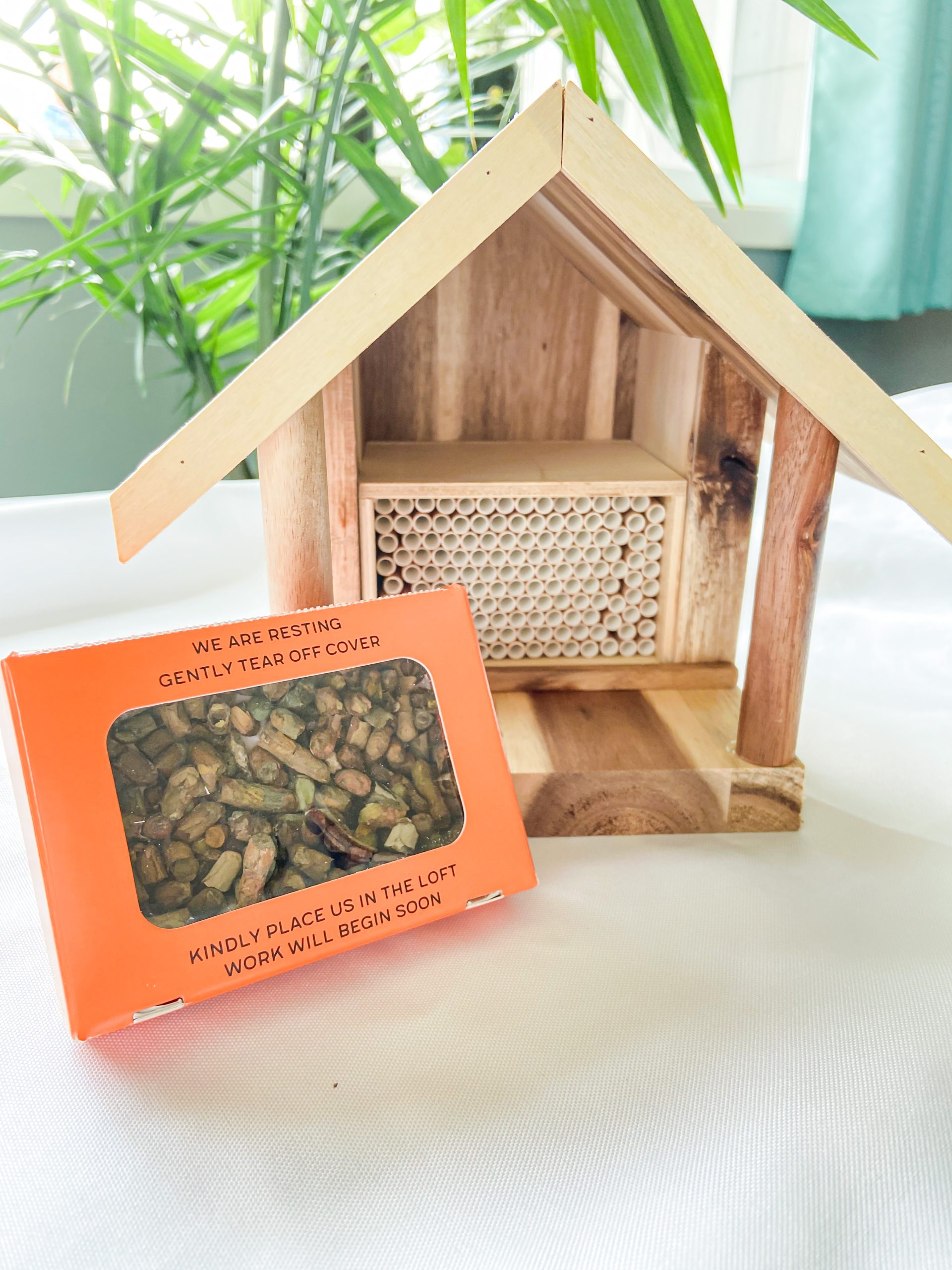If you want to encourage more growth in your garden, you can see rampant pollination with leafcutter bees! Known as “super pollinators,” leafcutter bees are an industrious species with a 1:20 pollinating ratio compared to honey bees. They are small, gentle, and easy to work around, making them an ideal gardening partner.
Kind Bee Farms provides leafcutter bees and bee houses to gardeners, farmers, and plant enthusiasts across North America. If you want to see your plant life thrive, we are your bee connection! Before you order your leafcutter bees, here are a few things you should take into consideration to get full potential from your bees and plants. Keep reading for our full leafcutter bee checklist.
Is the Temperature Warm Enough?
Outdoor temperature is one of the most important factors in whether your bees will thrive in your garden environment. Unlike many other bees that start showing up in the spring, leafcutters are summer bees at their best in the heat. Leafcutter bees love the warm summer months, so we recommend temperatures be a minimum of 20°C (68°F) before ordering your bees. They will also thrive in 40C or over 100F. Therefore, the best time to order your leafcutter bees is during the summer when your flowers and plants are already in bloom.
You can order your bees during the growing season or pre-order them during the off-season. If you decide to pre-order, research when higher temperatures will take effect in your area to ensure your bees do not arrive and hatch too early or late.
Have you already pre-ordered your bees for the wrong date? Contact us today, and we will happily alter the shipping date for you!
Will They Be Attracted to My Plants?
Bees are drawn to various plants and flowers, but leafcutter bees prefer those that grow closer to the ground, as leafcutters are low-flying bees. As you plan to add a leafcutter bee house to your garden for the next growing season, plan your garden plot to feature a few low-growing varieties. Pansies, blue stars, violets, bee balm, borage, and lavender are excellent low-growing additions to your flower garden, while blueberries, strawberries, raspberries, tomatoes, and cucumbers are perfect for your fruit and vegetable patches. The more low-growing plants your garden features, the more results you will see from these super pollinators!
Do I Have a Place to Set-Up My Bee House?
To ensure your leafcutter bees can thrive and reach your plants, have a suitable location set aside for the bee house! Your bee house should be placed close enough to the garden that the bees will fly out into the plants. Choose a location that’s close enough to your garden that the bees can access it easily, about 300ft from your plants and flowers.
Your bee house should be mounted up off the ground, approximately no higher than 4.’ This will prevent the bees from being blown away by the wind and will prevent the house from being knocked over by outside pets. As well, these bees are low-flying, so this height makes it easier for leafcutters to access their nesting tubes.
We do not recommend mounting the house on a tree, as this can attract ants, who will invade the house and damage your bee nests. Also, if the house is too close to the ground, mice or other invaders may take over the nesting tubes. Further, try to place your bee house facing the east to ensure you get as much morning sunshine as possible—leafcutter bees love morning rays!
Where Can I Store the House Over Winter?
During the off-season (Autumn through early spring), your bee house should be properly stored to keep your cocoons safe from moisture, pests, and other potential hazards. The house should be placed in a cold storage area to keep your cocoons from hatching, but that is not a moisture trap. Make sure to keep your bee house away from any heat sources in the storage area, as this can cause the nesting cocoons to hatch too early. Most importantly, they should be stored inside where they are safe from winter elements.
Get Super Pollinating Leaf Cutter Bees from Kind Bee Farms
If you want to see your garden explode with growth, introducing leafcutter bees is one of the best methods. Visit our Shopto learn more about our bees so you can begin planning your garden for the bee house location. Soon, you will see your super pollinators buzzing off to work!

